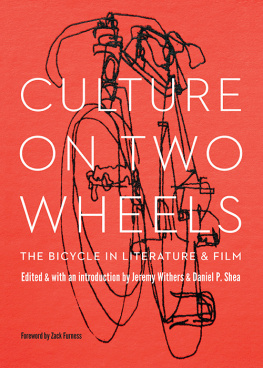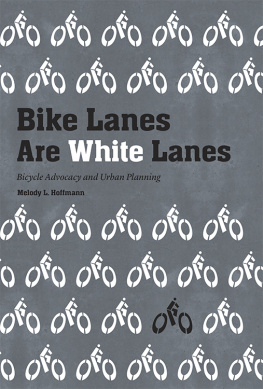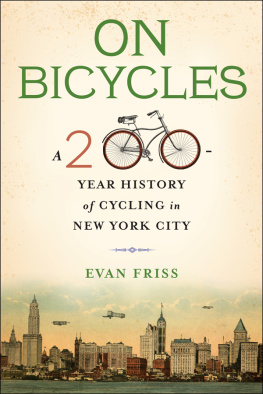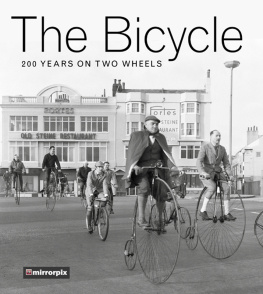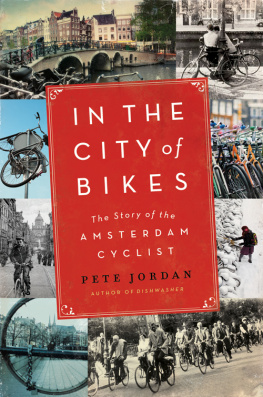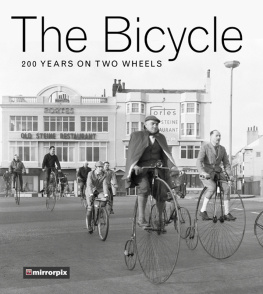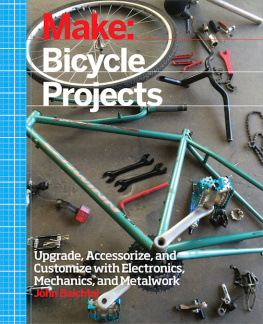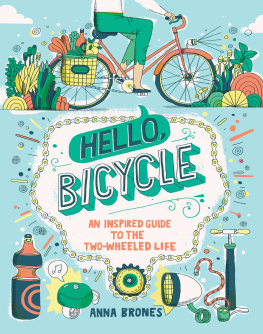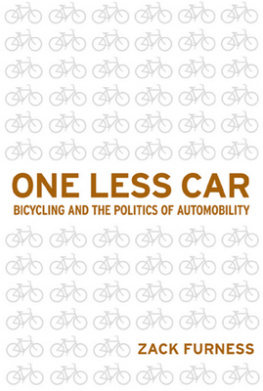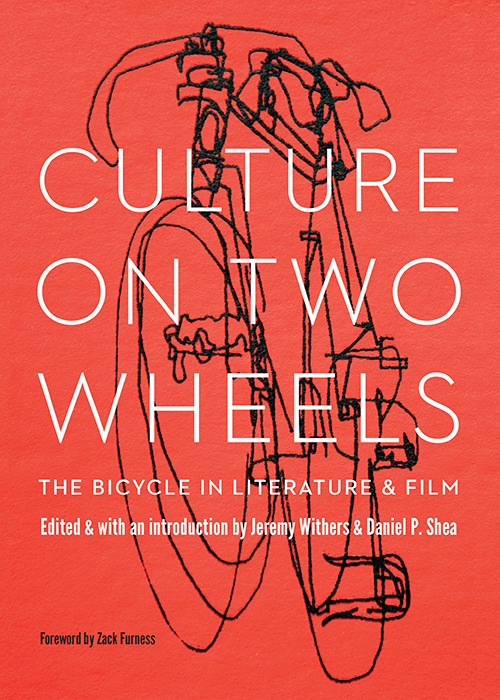Jeremy Withers and Daniel P. Shea
Nanci J. Adler
Charles L. P. Silet
Daniel P. Shea
Zack Furness
Having previously spent years of my life riding on, thinking about, talking about, and writing about bicycles, it is safe to say that I have seen images of bicycles and bicycling in just about every format possible, from mass-produced T-shirts and films, to DIY sculptures and fanzines, to tattoos both beautiful and cringe worthy. Consequently, I should not have been surprised last week when I was walking through a Target department store and noticed that, amid the sprawling display of clocks, mirrors, and abstract wall decor, one of the items available for purchase was a multipanel, canvas art print of a single-speed bicycle. However, it was still pretty strange, in the truest sense of the wordas in, I was trying to make out a familiar object rendered momentarily foreign to me. Maybe it was the fact that the encounter took place in my home of Pittsburgh, Pennsylvania, where, just fifteen years ago, bike commuters were something of an alien species on the roads and where the vast majority of adults who actually rode single-speed bikes (like the one in the print) were part of an intersecting counterculture of bike messengers, punk rockers, wingnut artists, and mountain bike diehards with mud-splattered shoes and bags. Or maybe it was because I had taken an extended hiatus from a decade of constantly analyzing bicycling and found myself surprisingly intrigued again by the everyday ways in which bicycles are made meaningful not just through mobility (i.e., riding) but through the culturally entrenched processes of representation.
As I stared at the print, I thought about the conversation that must have taken place between some midlevel executive at Target and the graphic designer commissioned to create a desirable image that speaks to some of the various ideas and tastes that people ostensibly connect to bicycling: the single-speed road bike functioning as a signifier of urbanness that gestures toward the fixed-gear cycling trend evident in U.S. cities throughout much of the last ten years, whereas the off-center, silk-screenesque, disjointed pop art aesthetic is likely meant to evoke some kind of connotation with youthfulness, creativity, and leisure apparently befitting those who ride bikes for fun or transportation. I also thought about a much more critical reading that one could give to the print as a symbol of bicyclings thorough commodificationa visual representation thoroughly divorced from the nonconformist, environmentalist, and, at times, anticonsumerist politics that informed a great deal of formal and informal U.S. bike advocacy since the early 1970s. Moreover, there was undoubtedly something that could be said about the availability of this print at a store that sits at ground zero of a massive (and ongoing) gentrification project that has displaced many of the neighborhoods African American residents and businesses and that sits less than a block away from a hip new coffee shop that makes local deliveries by bicycle. Then again, maybe the little kid who walked by me had it right when he stopped, pointed in the direction of my gaze, smiled from ear to ear, and shouted, Bicycle, Mommy! Bicycle!
I tell this story not because I think my insights and conflicted interpretations are somehow unique but for quite the opposite reason, which is to say that people have been constructing meaning around and through the image of the bicycle for nearly as long as people have been riding them. Long before the visual rhetoric of advertising became the stock and trade for the auto industry, early bicycle manufacturers had already cultivated richly symbolic images of mobility that located bicycling squarely within the domains of pleasure, fantasy, desire, beauty, independence, and the sensibilities of a technologically modern(ist) world. Champions of the bicycle similarly embraced the narrative form to extol the wonders of cycling for readers of popular magazines and fiction alike. Despite the radical changes in bicycling technologies and practicesnot to mention mediathroughout the twentieth and early twenty-first centuries, we are still immersed in an ongoing process of defining and debating the meaning of bicycling through the stories we write, the images we capture, the films we watch, and the various digital media we use to interact. Then, as now, people recognized that representations of bicycles and bicycling matter, because they shape our sensibilities in ways that affect, not just our perceptions of specific technologies and practices, but also the real and imagined relationships we have to (among other things) production, consumption, material culture, geography, and each other.
Whereas much has been written about the cultural roles of the automobile and driving in literature and popular culture, there has been surprisingly little analogous work devoted to the bicycle and bicycling, particularly in academia, where cycling is predominantly analyzed through the positivistic lenses of urban planning and injury prevention. At the risk of minimizing the importance of research that provides transportation planners, policy makers, and cycling advocates with a better understanding of where, when, and how people ride bicycles, many of these studies tell us very little about how and why it is actually meaningful to those who do so. Recent ethnographic research on bicycling has dramatically enhanced our knowledge of not only cycling practices, cycling communities, and the everyday lives of bike riders but also the complex cultural, socioeconomic, and political relationships articulated to and through cycling mobilities. Yet even within this diverse and burgeoning realm of scholarship, one still finds relatively few serious engagements with representations of bicycling, despite the fact that, somewhat ironically, cyclists everywhere devote an extraordinary amount of time to the politics of representation: scrutinizing depictions of gender in bicycling ads, critiquing the ways that cyclists are framed in news stories and magazine articles, and even debating whether the very words we use to communicatefor example, cyclist vs. bicyclist vs. bike riderinfluence how people identify themselves (to give just a few examples).

